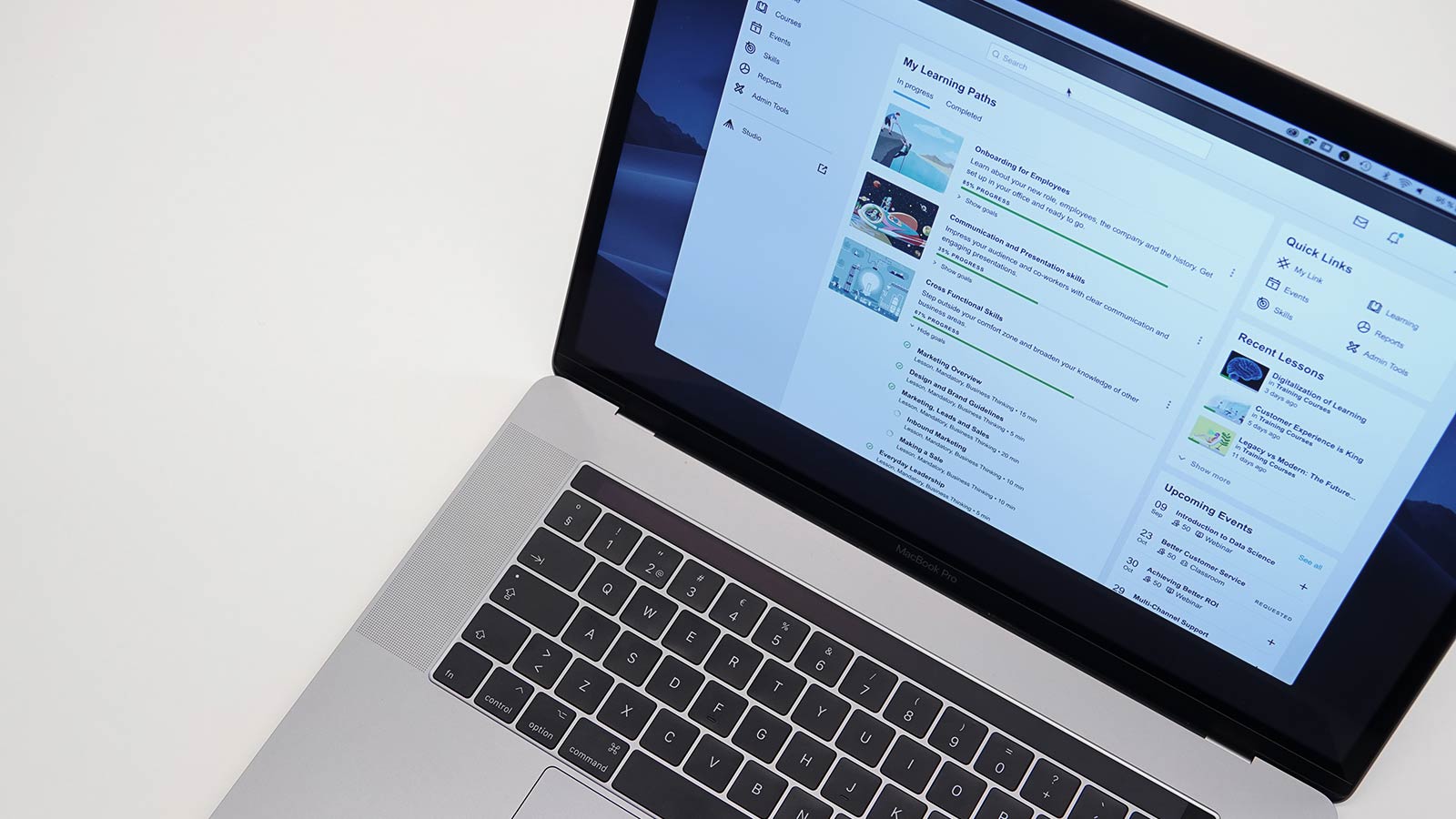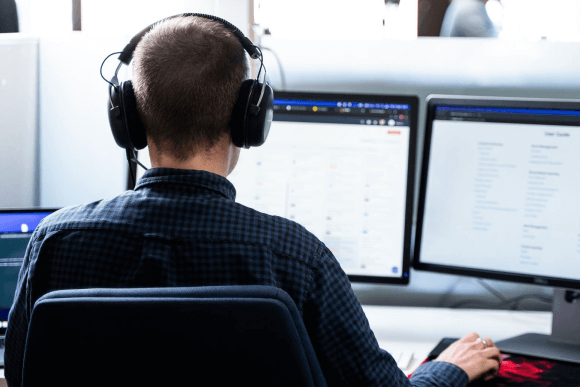LMS to LXP – steps to a successful migration
What are the advantages of Learning Experience Platforms (LXP) and how to migrate from a Learning Management System (LMS) to an LXP?

Your L&D department is convinced they need a change. Your LMS is not serving its purpose. Learning in your organization needs to be raised to the next level. You have heard about Learning Experience Platforms (LXP) and know that an LXP could serve your business’ needs. Before rushing into the change, begin by asking the question, “why?”
Why switch from an LMS to an LXP?
Why do you think your current LMS is not enough anymore, and why do you think there is a better platform to support your learners? What do you want to do differently?
Maybe your users are constantly complaining about a bad user experience?
Maybe your current LMS is only used for compliance training and never for anything more engaging?
Maybe your existing system doesn’t give you visibility into what users are doing, and what the users’ needs are?
Maybe your content is weak, but making good content costs a lot?
Perhaps your existing LMS doesn’t support self-directed learning for employees, doesn’t provide AI based recommendations, doesn’t have user-generated content and/or doesn’t allow for sharing and recommending content to peers; maybe your LMS is lacking a lot of things you feel are extremely important for learning to support the goals of your organization.
Discover LMS capabilities and limitations in our guide: What is an LMS? as well as What are the key differences between LMS and LXP
The emergence of the Learning Experience Platform
Many of the reasons listed above have resulted in the latest emerging generation of systems in the learning market, known as Learning Experience Platforms, often referred to as an LXP or LEP.
The major advantages of LXPs are great end-user experience:
- strong focus on personalization
- the ability to serve learning content from many different sources, including external providers and user-generated content
- extensive analytics capabilities to show what happens now and to predict what could be happening next
- Often LXPs comes with AI-based features, such as chatbots
- deep content analysis and AI-powered recommendations for learners
- LXP’s capability stack also includes informal learning, like curation, sharing and peer-to-peer recommendations.

The advantages of an LXP are clear. You make a decision to get an LXP, then what? Should everything be changed all at once? Will you lose all the data in the old LMS? What should you consider when beginning the migration process? How can you start benefiting from parts of a new system without jeopardizing existing processes and without losing important data you have collected?
The migration process will take time, and you don’t have to do it all at once. Take the time, plan, test, and make sure that during the migration process the most valuable assets from your LMS are retained.
The most valuable assets in your current LMS
What are the most valuable assets in your current LMS? I strongly believe there are two: the learning content, and the data.
First, it is the learning content you built over time, be it onboarding, security, processes or any other training which is highly relevant for your organization.
Second, it is data about your learners and their progress and results on using that learning content. It could include information about certificates, compliance training, skills assessments and so on.
You need to leverage the data and the learning content, but the system you have still doesn’t fit for the current fast-changing world and the preferences of your learners. So, how to proceed?
An iterative approach to the migration
Deployment of a new system in an organization is always a complex process. The route to success is not straight-forward, but more of an iterative approach, where each new cycle is built on top of findings from the previous one. Take the iterative approach to the deployment of an LXP, and make sure you leverage the data and learning content you have.

Start small – do a Proof of Concept (POC) with your the new LXP. Run a pilot with a small, but diverse group of learners. Be careful when defining the goal – you are not yet aiming to replace your existing LMS, you are just evaluating the new approach to learning and looking for feedback from your end users – the ones who will use your system in the future.
Continue with designing a new learning experience – Good or bad, the first expression could be a go/no-go decision for the users to continue. Ensure, that you make your experiment engaging for the pilot users by providing learning content which works well, looks good, and could be consumed on a go at any time through mobile.
Evaluate the progress – Track and analyze your users so you can see what they do, when they learn, what are their preferences in consuming your learning content. Collect their feedback after the pilot runs. Evaluate the results of the pilot, including the data you gather through analytics and the feedback gathered.
Now you are ready for the next step.
Slowly, start moving the data and learners
You have your POC, you know you are going in the right direction and you are ready to begin the migration. Your users are excited and they feel engaged. You saw that when looking at the analytics and based on the users’ feedback.
What if you start to deliver part of that learning through your new LXP platform?
Onboarding is a good place to start
Do you have employee onboarding training materials in your old LMS? This could be a good place to start your migration. This is where new employees are introduced to your organization’s learning platform for the first time.
Migrate your existing onboarding content into the LXP, and make improvements to the content according to your new learning experience plan, or simply allow the LXP to access your LMS content as an external source.
Ensure that learners can find your content in the LXP through its embedded search capabilities. Don’t forget to connect your LXP with your HR systems so the learners’ progress can be stored and you can ensure compliance needs are met.
Remember that the data in the old LMS is a very important asset for your organization. You need to plan how to migrate that data, or how to integrate it into the LXP.
Again, run your LXP with a pilot group, get their feedback and measure their progress with the help of analytics. Evaluate, what you have learned from this phase. And move on to the next steps.
Power to the learners!
You are now ready to give more power to the learners, and grant them access to the new LXP.
You need to combine ”push” approach for the learning content with ”pull” capabilities that a proper LXP provides out of the box.
In the previous step, you enabled search, so learners can find the learning they need themselves. Now it is time to enable recommendations, which can be based on the user’s role, location, department, level of expertise and many other factors.
You can also extend the breadth of content sources available – external MOOCs, like Coursera, edX and LinkedIn Learning are good resources. Bring external MOOCs into your LXP, so learners can access quality content without you having to build quality content from scratch.
Another valuable source for learning content is your users. They are the ones who learn the hard way how things work in your organization, and they often want to share that with their peers. Enable your LXP to serve content built by your learners, and allow learners to share and recommend content to their peers.
As with the previous phases, run a pilot if you feel it’s appropriate and if you are not yet ready to decommission your old LMS and migrate all the data to the LXP. Learn from feedback, do improvements and changes needed, and then plan how to sunset your LMS.
Keep asking why, keep developing, keep evolving
Congrats! You now have your LXP serving all of your users and you are able to benefit from all the components it offers to you. Remember that this is not the end of the journey, the journey has just begun. Always remember, what led you to go down this path? Why did you begin to think that your LMS was not serving your organization anymore?
It wasn’t evolving, it wasn’t in line with what your users and your organization needed. You wanted to develop and improve. It is important to note that change is constant, and if you stop here, you will sooner or later end up with the same problem you had before.
For your organization to thrive and succeed, the new LXP you adopt into use has to change and evolve in order to support the changing needs of your learners and your organization. You need to ensure that your LXP vendor is your partner in the evolution of the system.
Evaluate if co-development can be an option for you with the vendor. Ensure that your LXP is evolving and incorporating changes in technologies, learning methods and user preferences.
Good luck with your migration!



